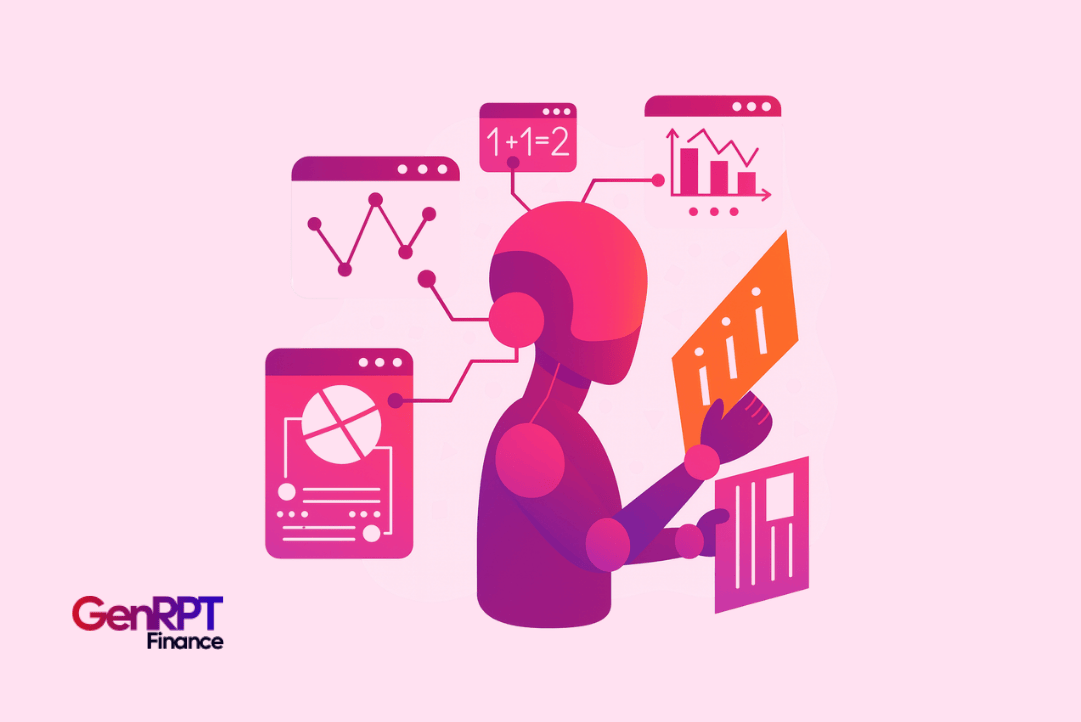
AI-Powered Equity Research Reports with GenRPT Finance
October 8, 2025 | By GenRPT Finance
In financial markets, data is everywhere, but meaningful insight is rare. That’s why equity research remains the foundation of smart investing. For investment analysts, financial advisors, and portfolio managers, a well-crafted research report is not just a document—it’s a decision-making tool.
So, what defines a great AI-powered equity research report? Let’s explore the components, structure, and how technologies like AI for data analysis are reshaping how analysts work today.
Why Equity Research Still Matters
Despite automation, equity research continues to guide strategic investments. It helps portfolio managers navigate uncertainty and enables financial consultants, wealth advisors, and asset managers to make confident, data-backed choices.
A strong report enables:
1. Informed risk assessment
2. Confident buy/hold/sell decisions
3. Comparative analysis across sectors and geographies
4. Clear communication of financial strategies
When done right, it bridges the gap between raw numbers and actionable insight.
The Core Components of a Strong Equity Research Report
1. Clear Investment Thesis
Every great report begins with a central idea, the investment thesis. It should quickly communicate why a company is a good or poor investment. For portfolio managers, clarity here saves time and builds trust.
2. In-Depth Equity Analysis
Effective reports combine qualitative and quantitative evaluation. Analysts assess:
1. Business model and growth potential
2. Competitive advantage and market positioning
3. Management capability and governance
4. Geographic exposure and sector relevance
AI tools now assist in extracting this information from filings, presentations, and earnings transcripts, allowing analysts to focus on strategic interpretation rather than data collection.
3. Strong Financial Reports
A great report rests on solid financial foundations. It includes:
1. Income statements, balance sheets, and cash flow analysis
2. Financial projections and scenario planning
3. Ratio analysis and profitability trends
These insights form the backbone of financial data analysis and future forecasting.
4. Macroeconomic Outlook
Equity research does not exist in isolation. Incorporating the macroeconomic outlook, like inflation rates, interest policies, and sector growth, is vital. It provides the context that turns company data into a market narrative.
The Role of Risk Analysis in Equity Research
Uncertainty is a given in finance. Top-tier reports recognize this and include detailed risk analysis sections:
1. Market risk analysis for volatility exposure
2. Financial risk assessment for solvency and liquidity concerns
3. Portfolio risk assessment for diversification and allocation impact
As global markets fluctuate, these sections are increasingly valued by asset managers and financial data analysts.
Making Reports Actionable
Information alone is not enough, reports must lead to decisions. The best analyst reports include:
1. Valuation models (DCF, P/E, EV/EBITDA)
2. Investment ratings (Buy/Hold/Sell)
3. Price target ranges and rationale
4. Sensitivity analysis based on key variables
These actionable elements help investors quickly translate insight into movement.
Visuals and Data Presentation
Data is powerful, but visuals make it memorable. Reports that use charts, dashboards, and visual summaries outperform plain text ones.
Common inclusions:
1. Revenue and cost trend visualizations
2. Peer benchmarking charts
3. Geographic and segment exposure heatmaps
4. Interactive dashboards for management briefings
Tools like GenRPT Finance make these visual insights easy to generate from structured and unstructured data.
The Shift Toward Equity Research Automation
Traditional research writing can take hours or even days. AI-powered equity research automation accelerates this process.
With AI report generators and NLP-based summarization models, analysts can:
1. Scan quarterly earnings and filings in minutes
2. Extract insights from large datasets
3. Detect anomalies or sentiment shifts instantly
This shift enables financial professionals to spend more time interpreting and less time compiling.
Who Benefits from These Reports
Equity research fuels decisions across the financial ecosystem:
1. Investment analysts prepare insights for internal and client presentations
2. Portfolio managers rebalance positions based on new findings
3. Wealth advisors use reports to explain recommendations
4. Financial consultants leverage insights during due diligence and M&A
The clarity and consistency enabled by AI report tools make these reports more reliable and easier to scale.
AI and Analysts: Partners in Insight
AI doesn’t replace analysts, it empowers them. Automated tools enhance efficiency while preserving human interpretation. With solutions like GenRPT Finance, analysts gain:
1. Faster turnaround for research and valuation updates
2. Seamless integration of macroeconomic and company data
3. Consistency across multiple equity research reports
The result? More coverage, better insights, and improved client confidence.
Final Thoughts
A great equity research report tells a story built on data, strategy, and foresight. In an environment where speed and accuracy matter, AI-driven tools like GenRPT Finance are redefining how professionals conduct equity research.
They enable teams to create high-quality, actionable reports, complete with analytics, visuals, and risk evaluation—in a fraction of the time.
Still, it’s the analyst’s judgment that transforms data into decisions.
At GenRPT Finance, we believe the future of equity research lies in this balance between human expertise and intelligent automation—a future where every insight is faster, deeper, and smarter.
